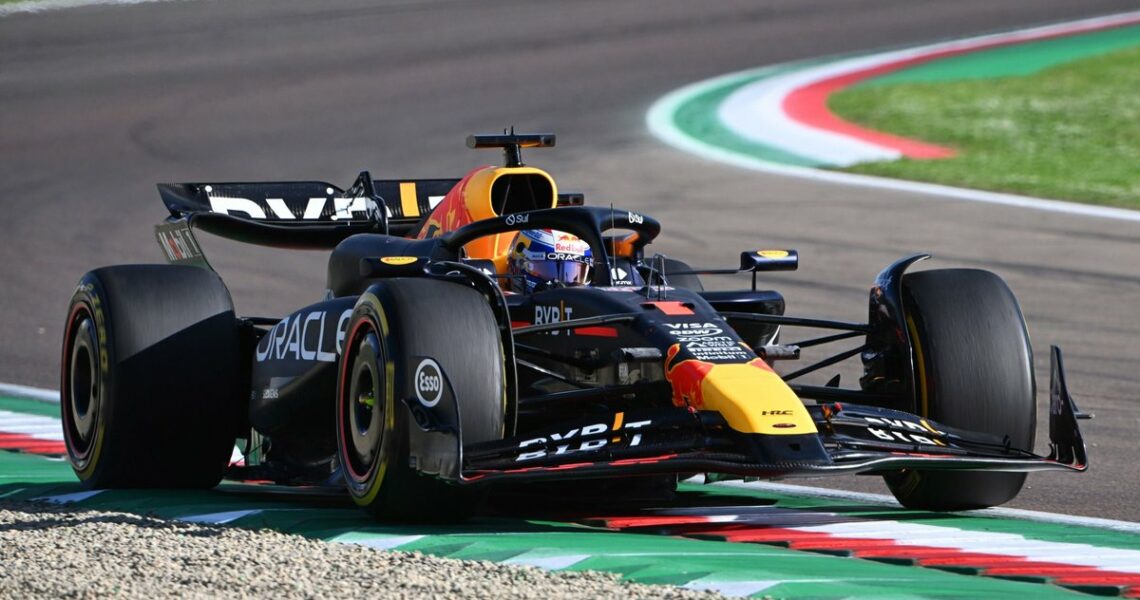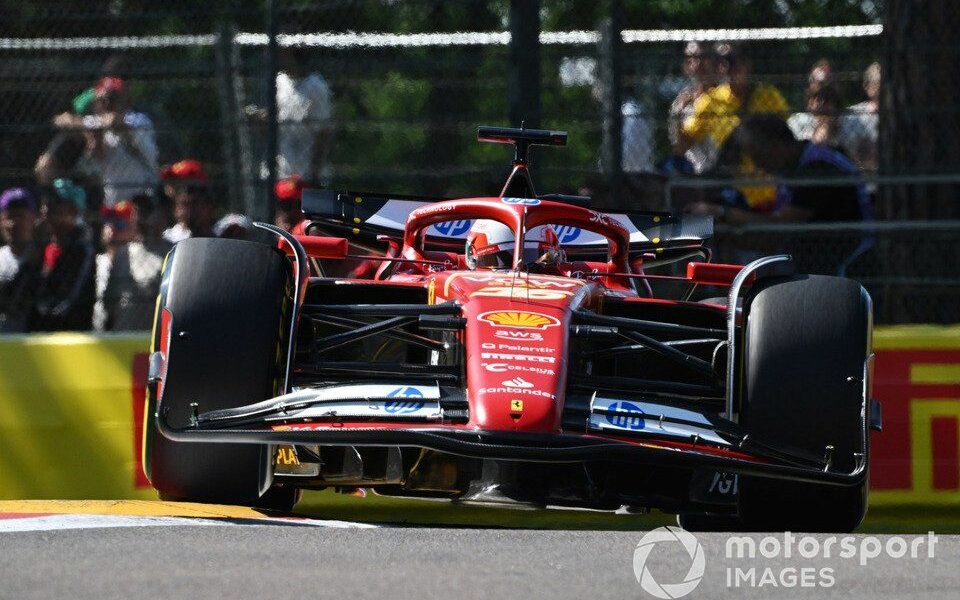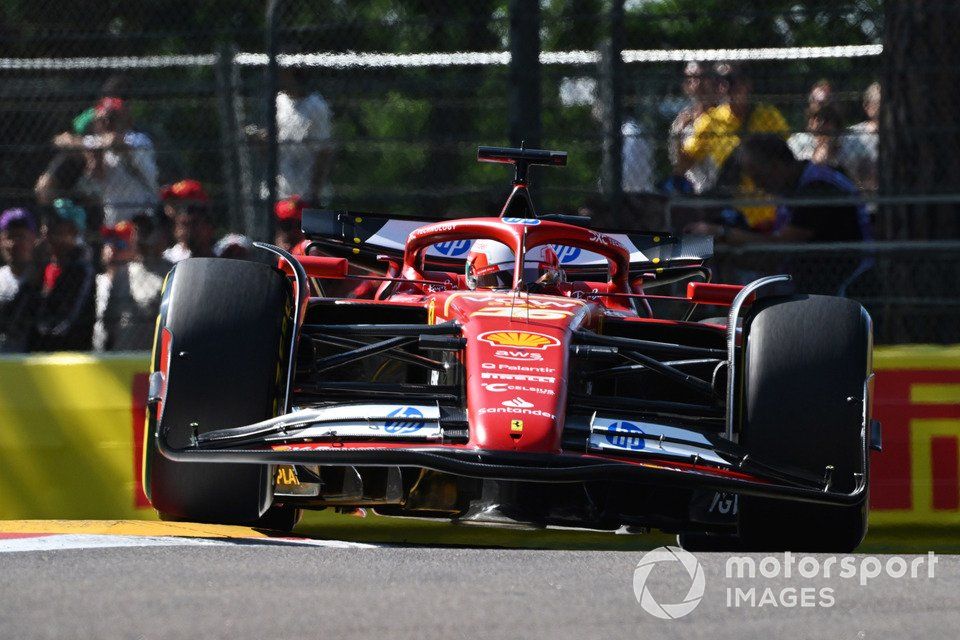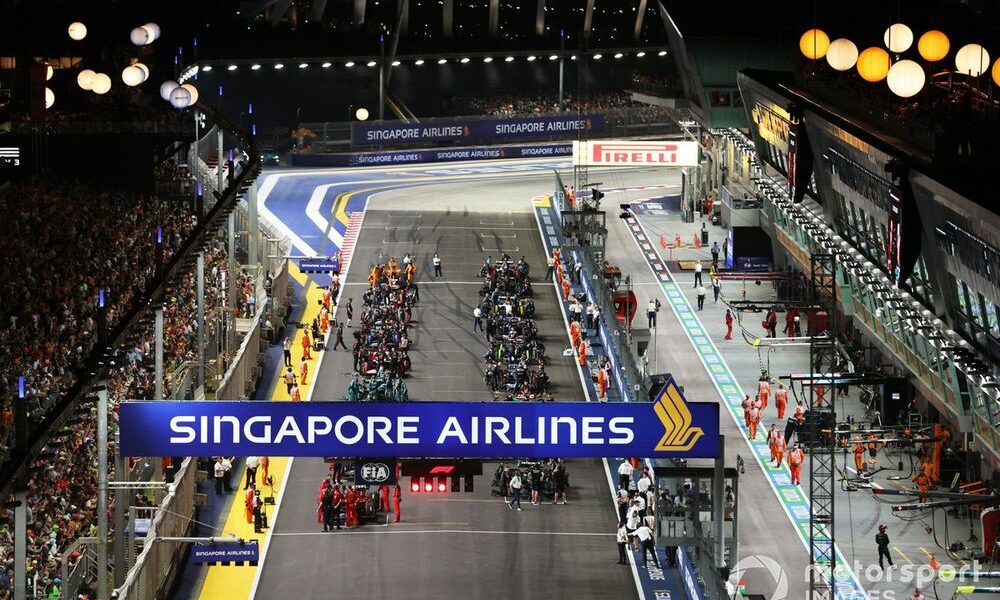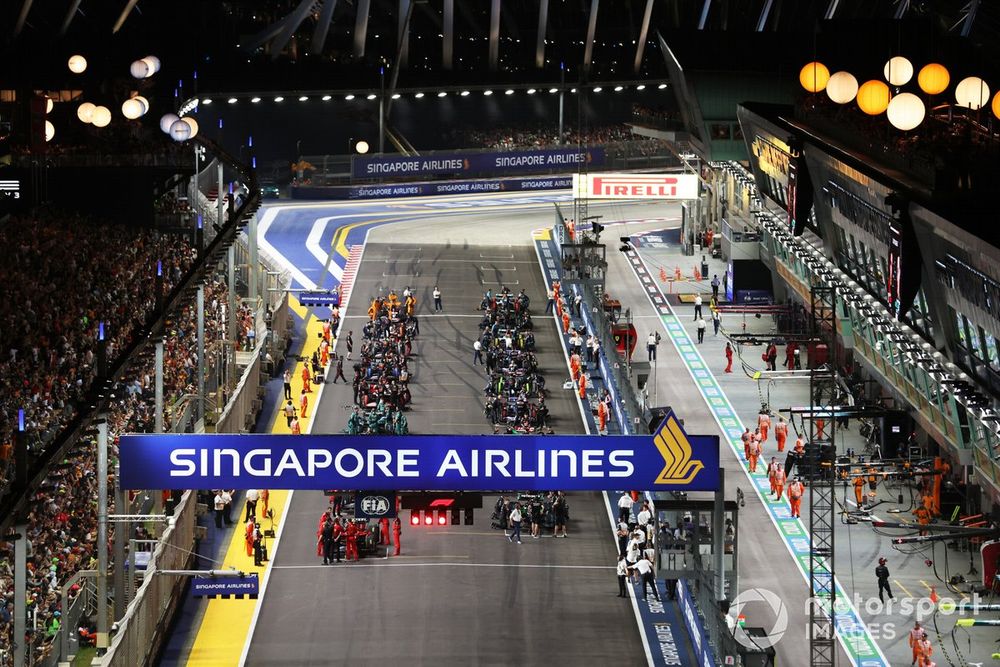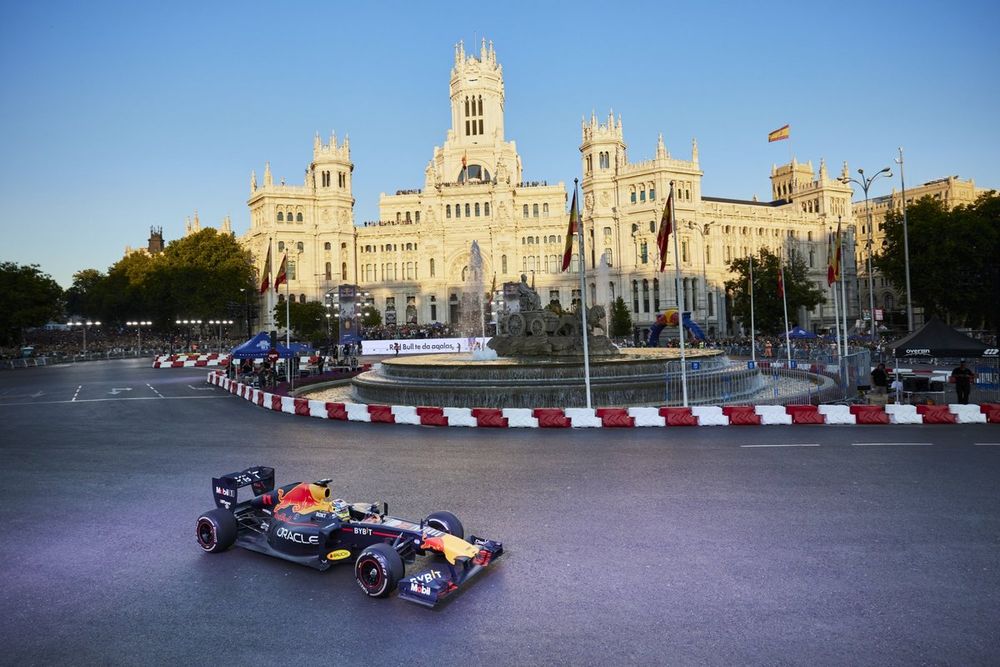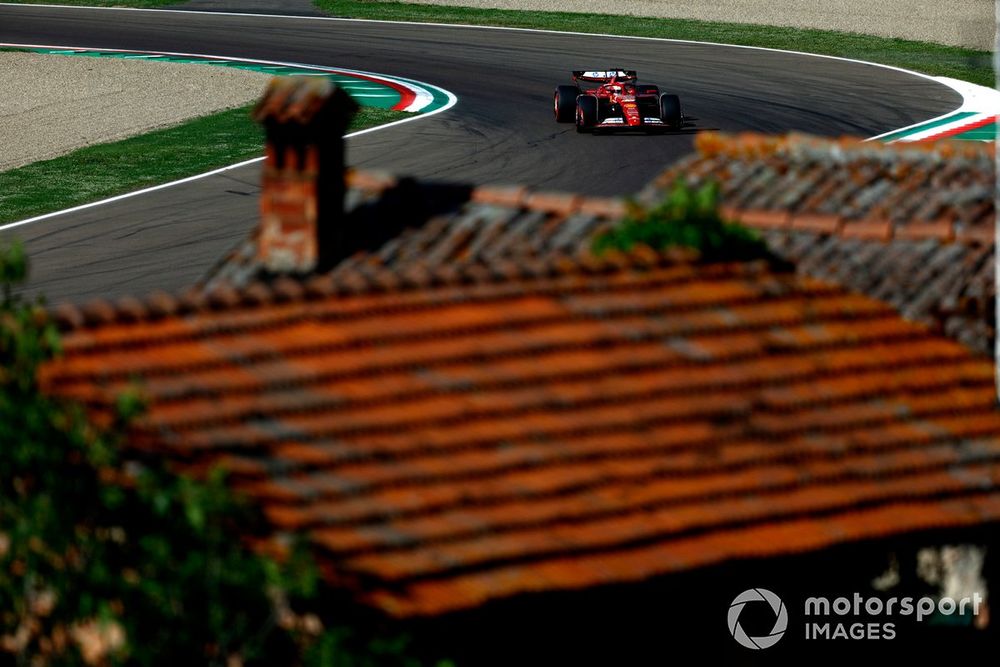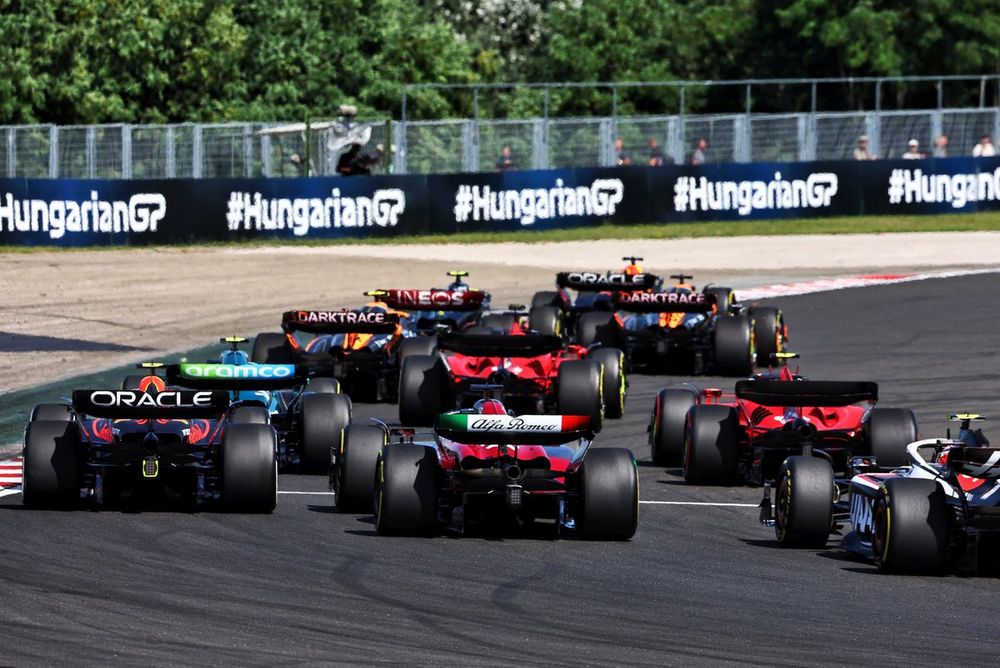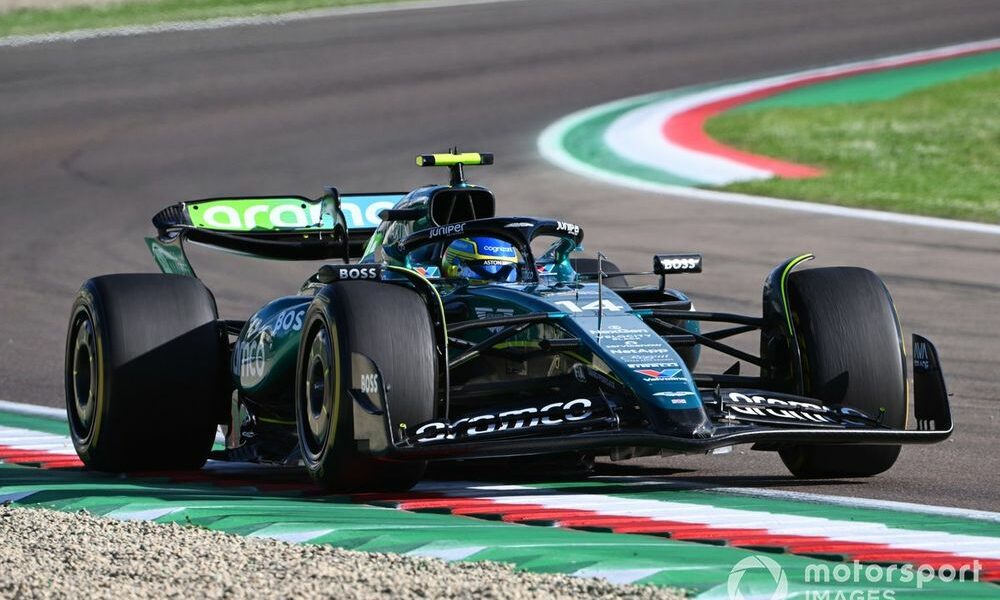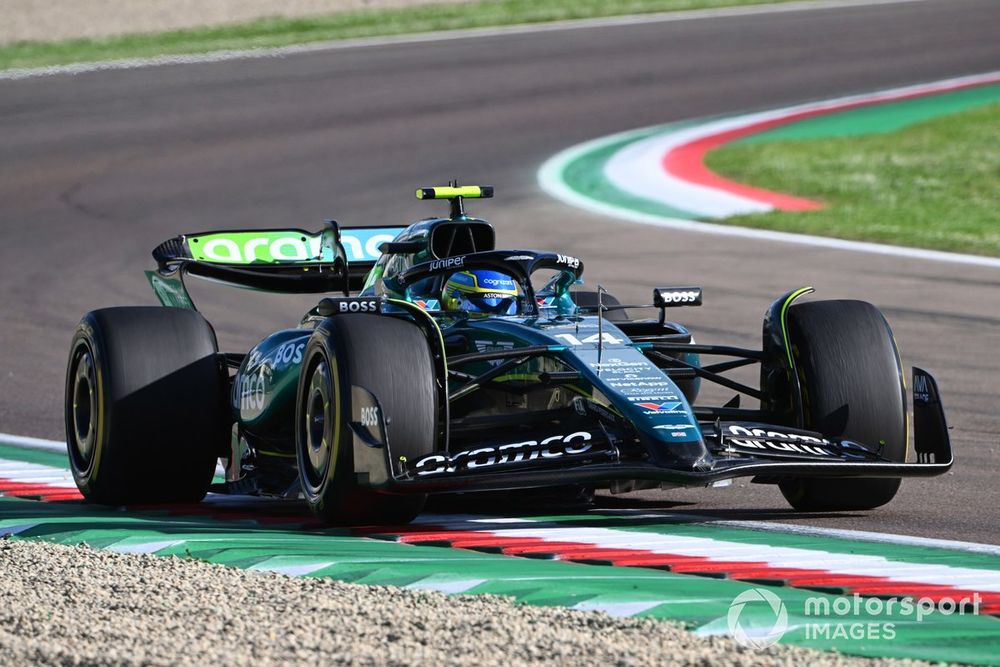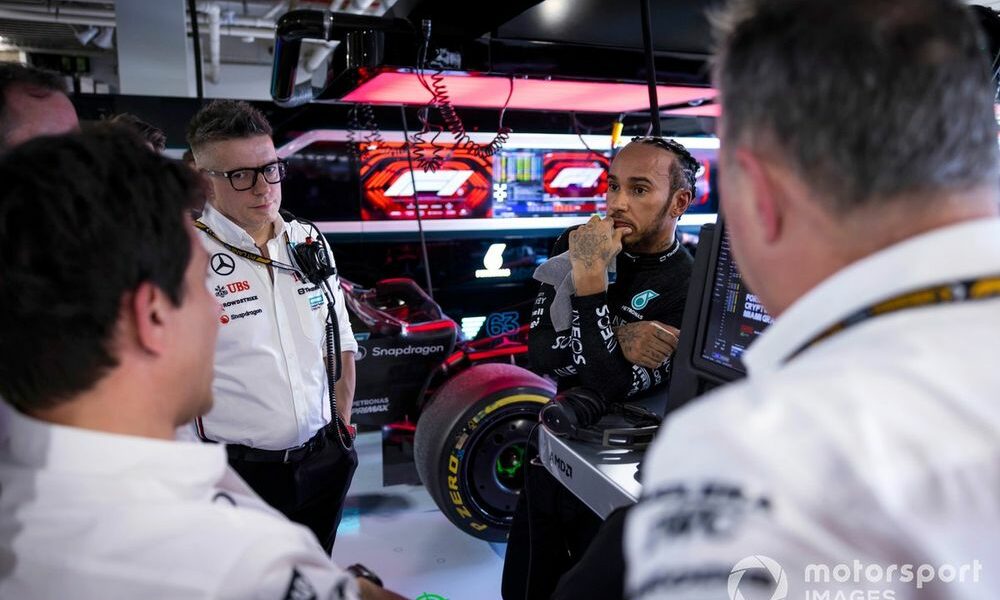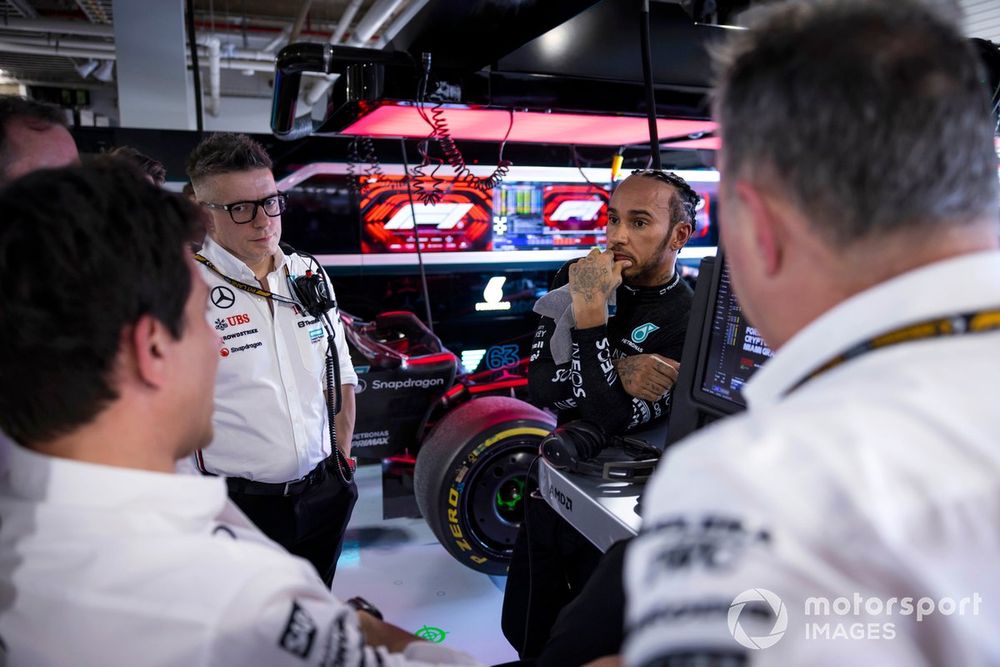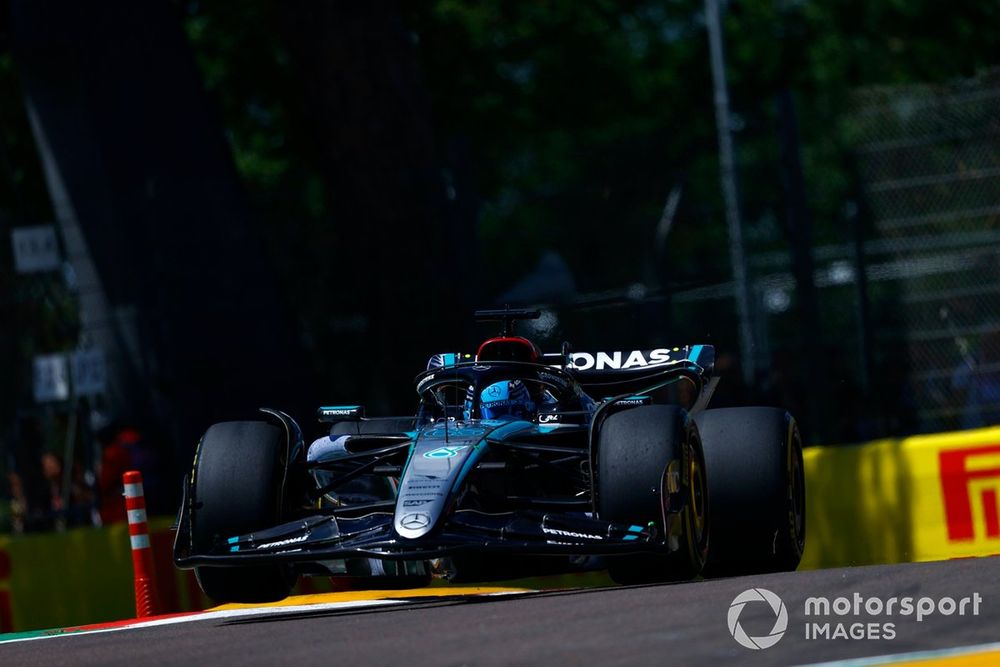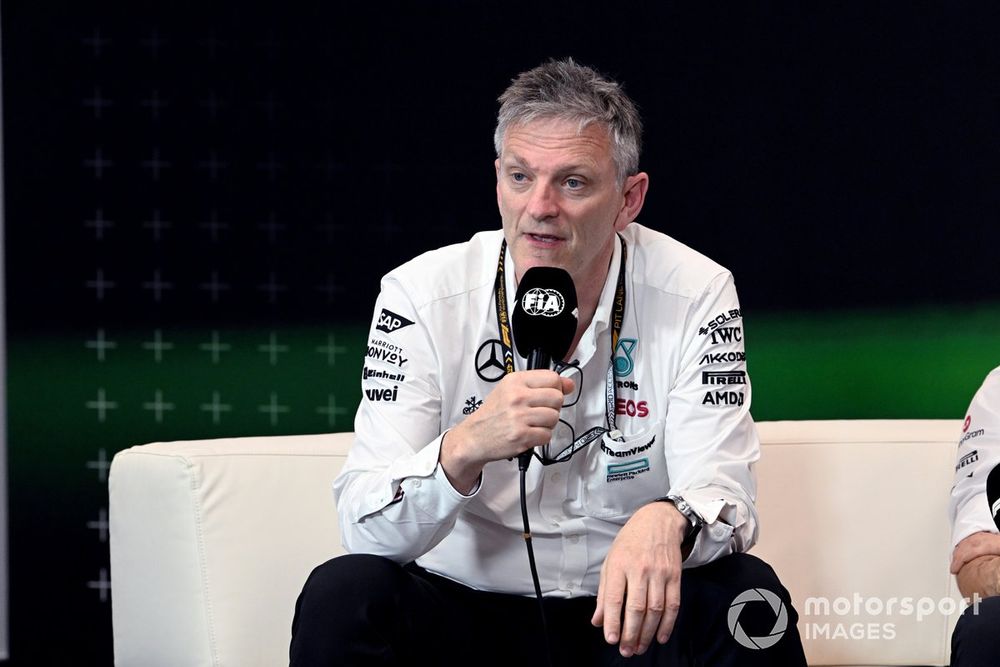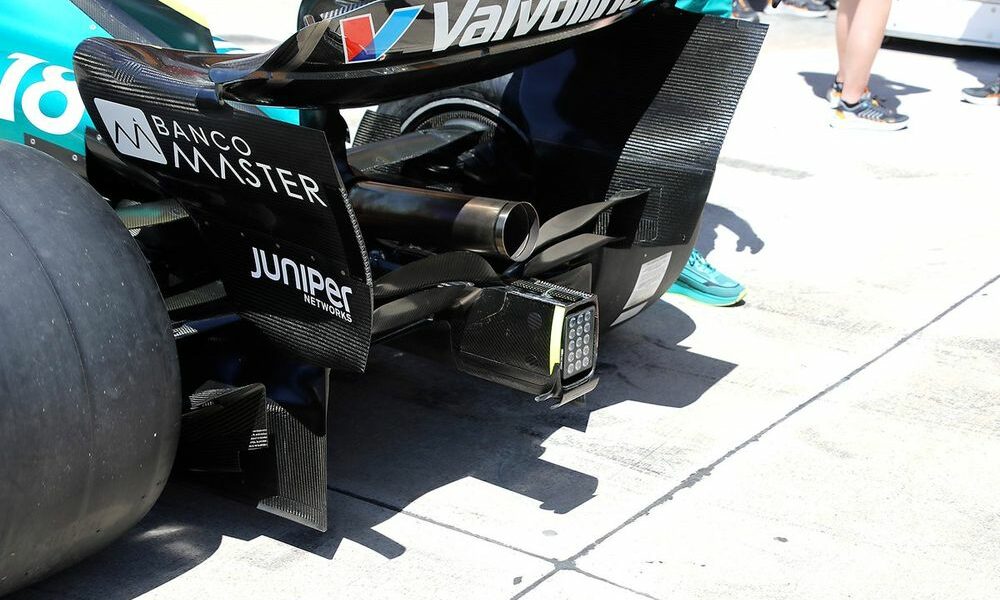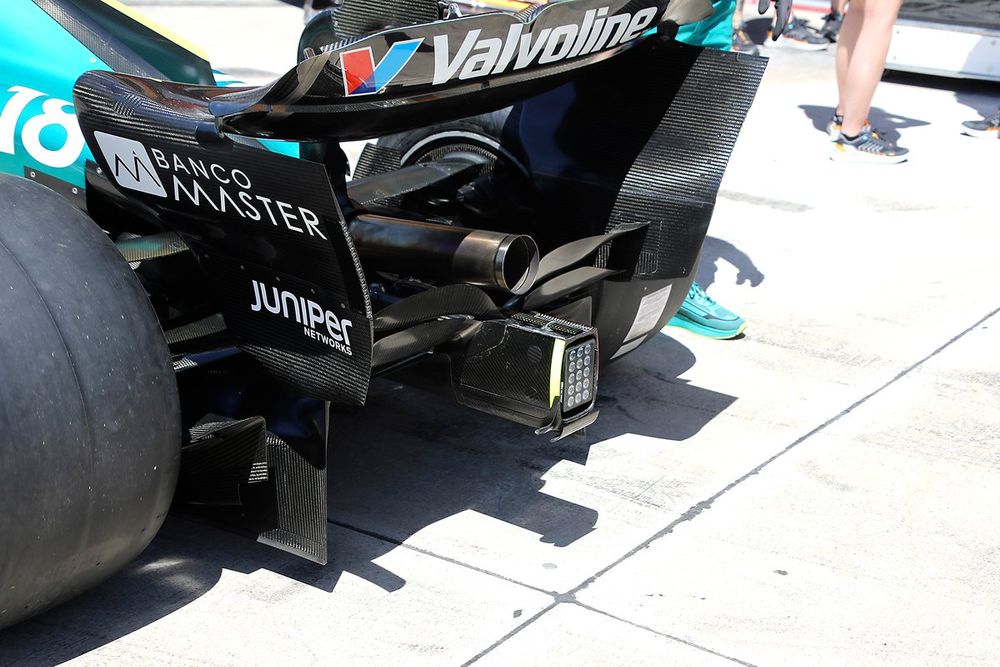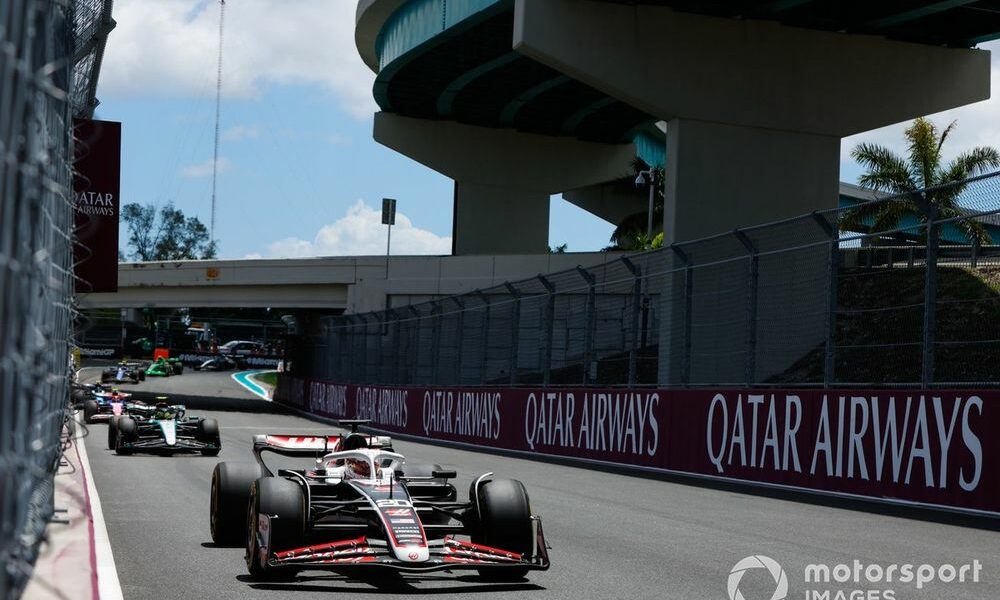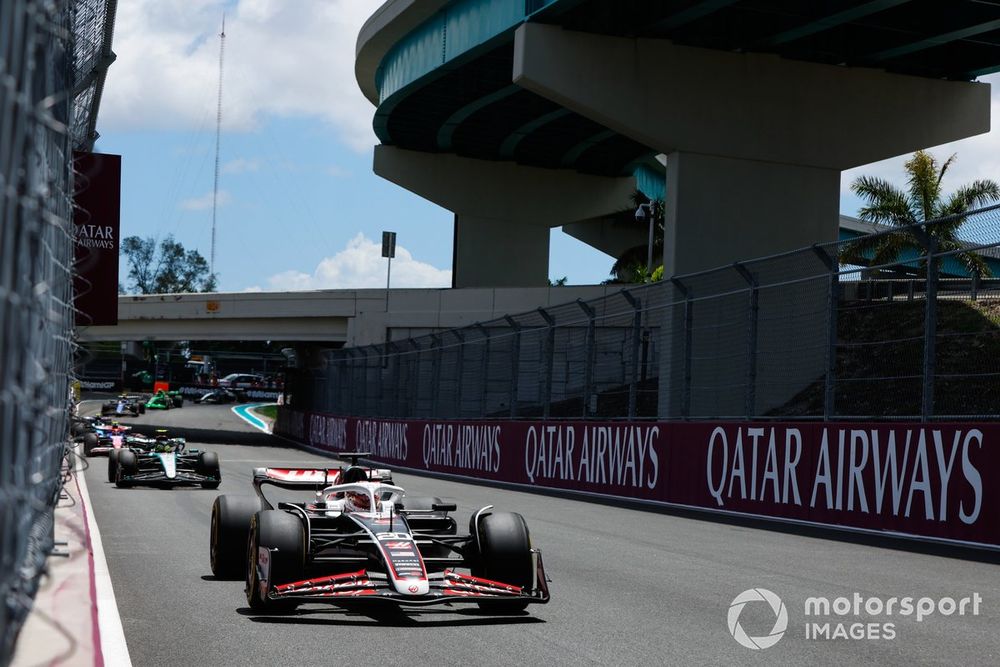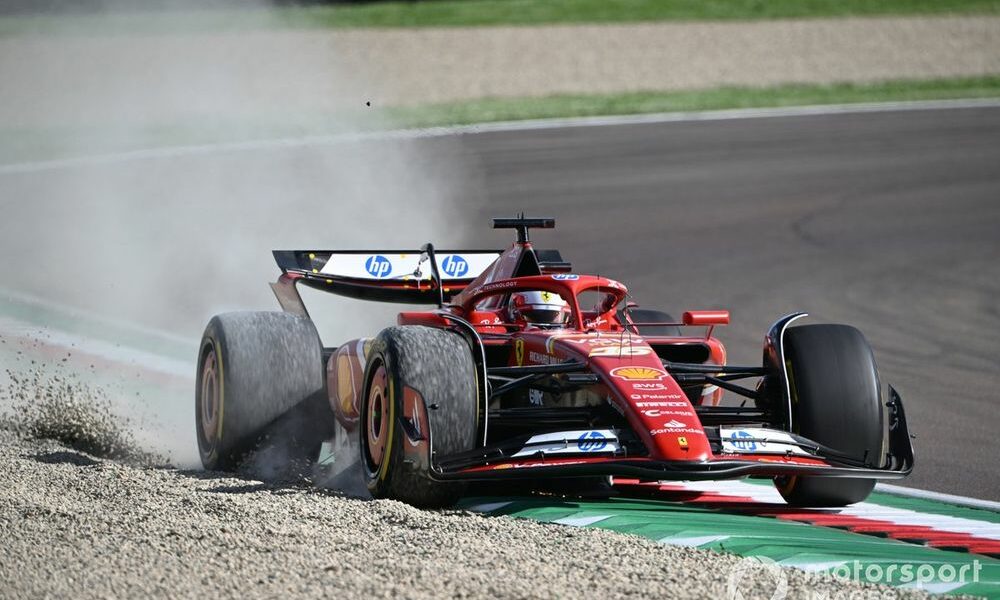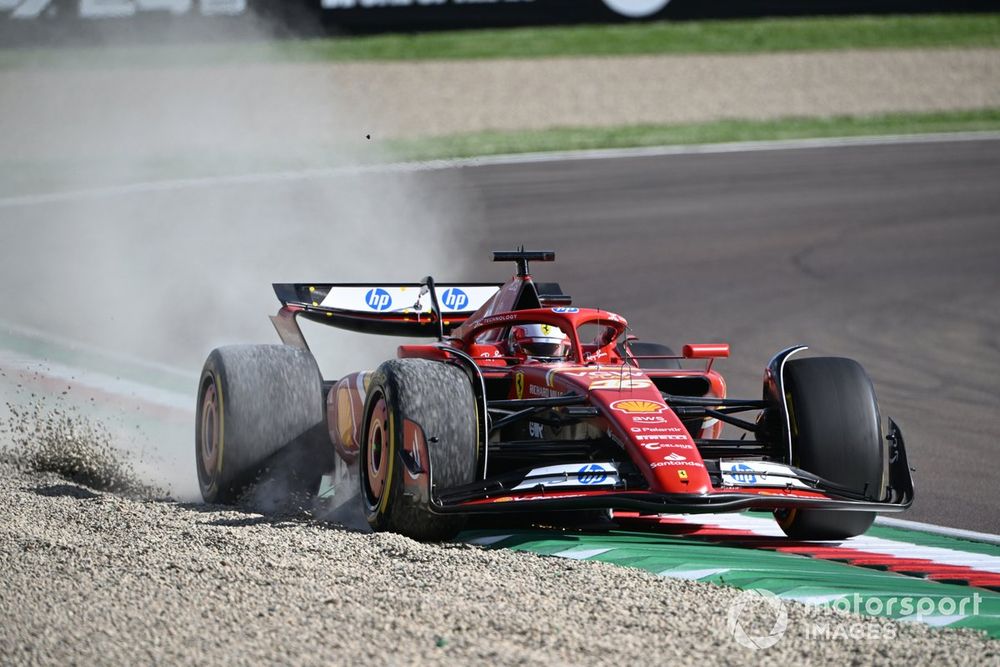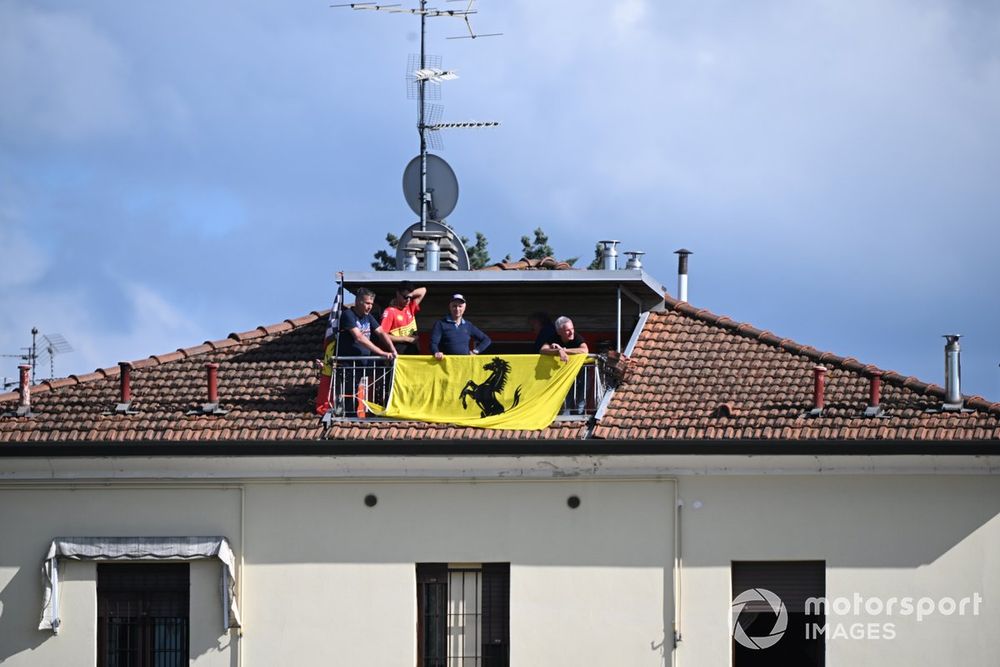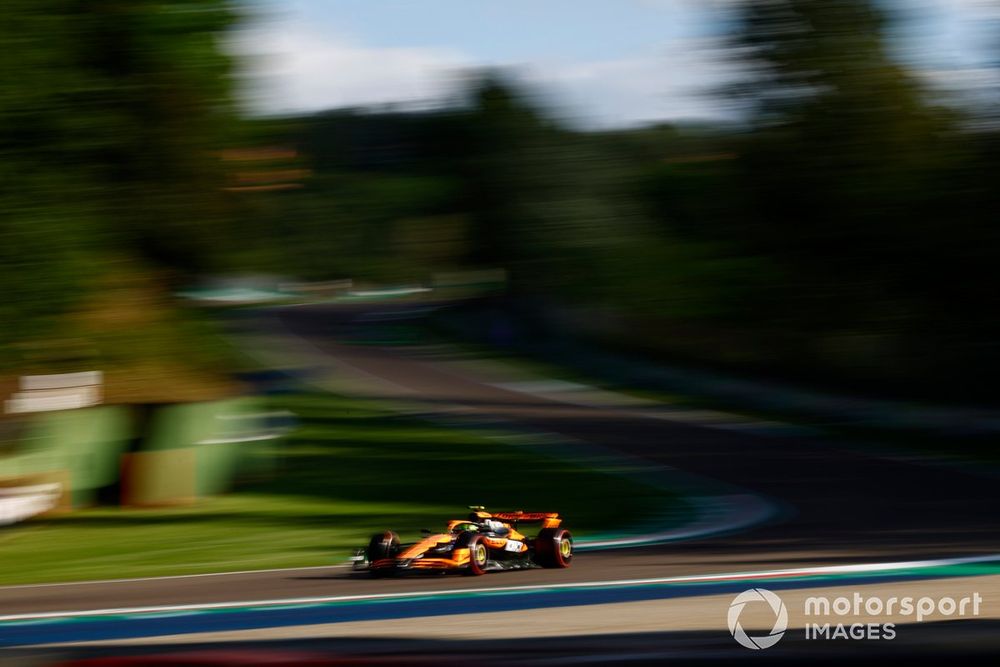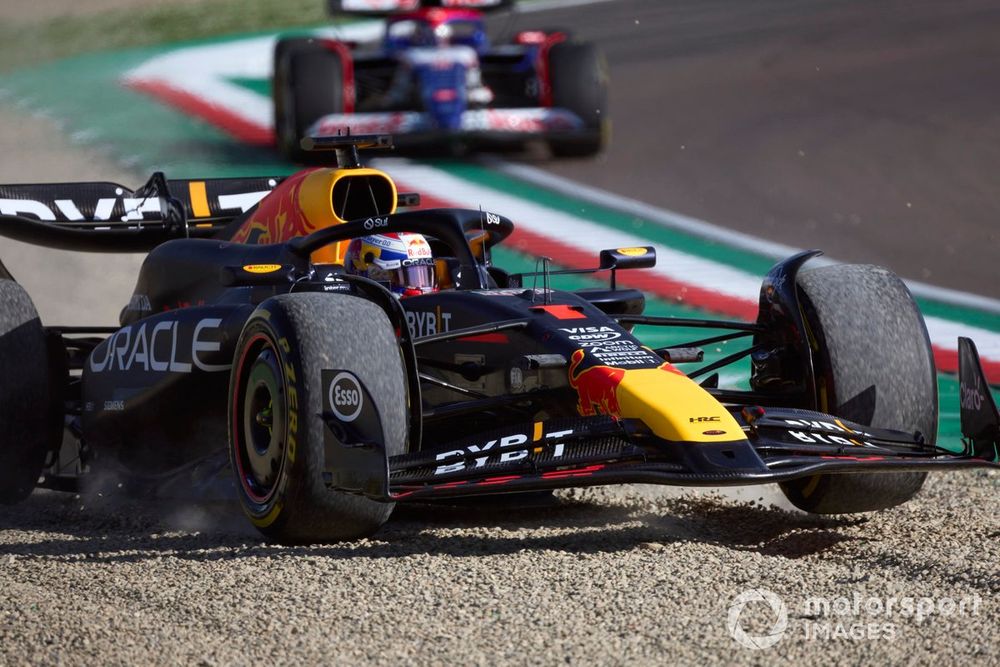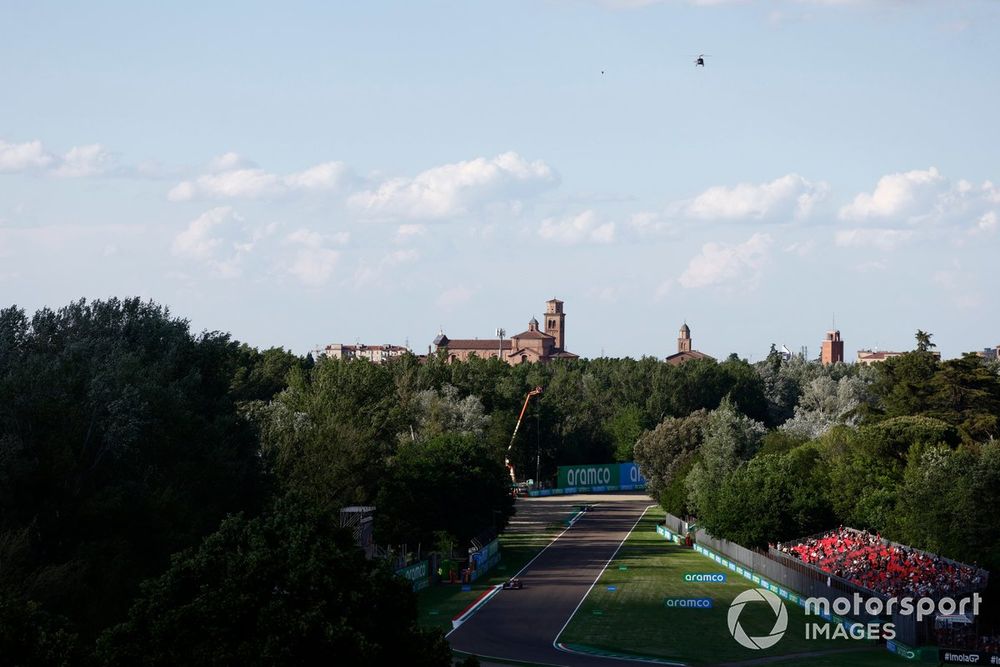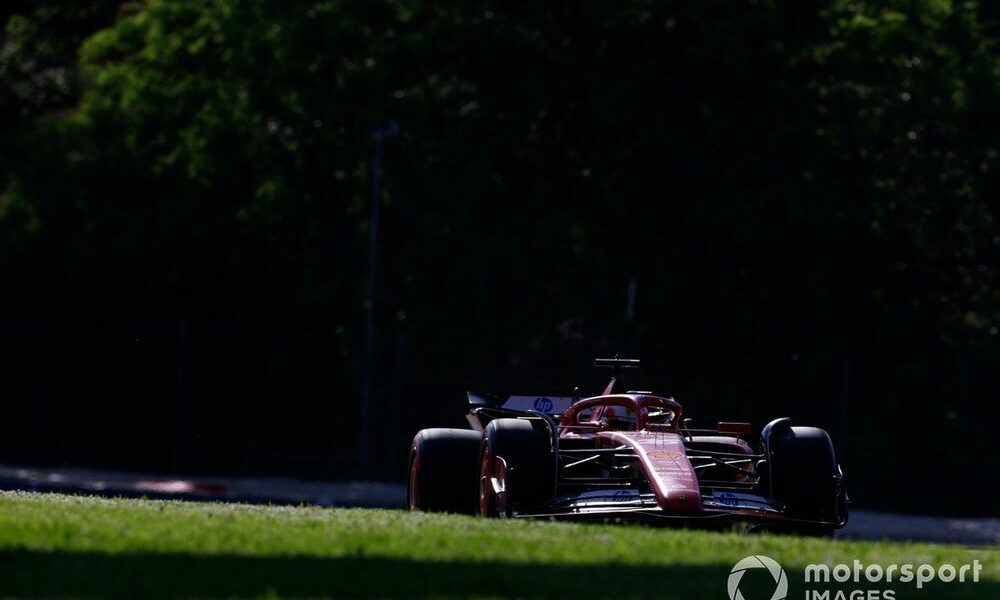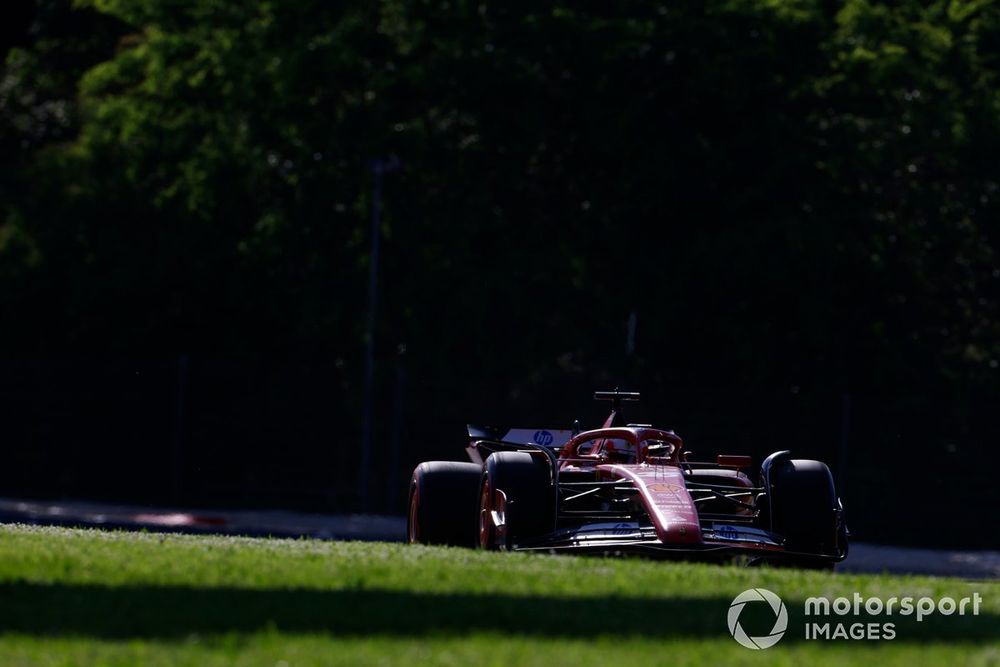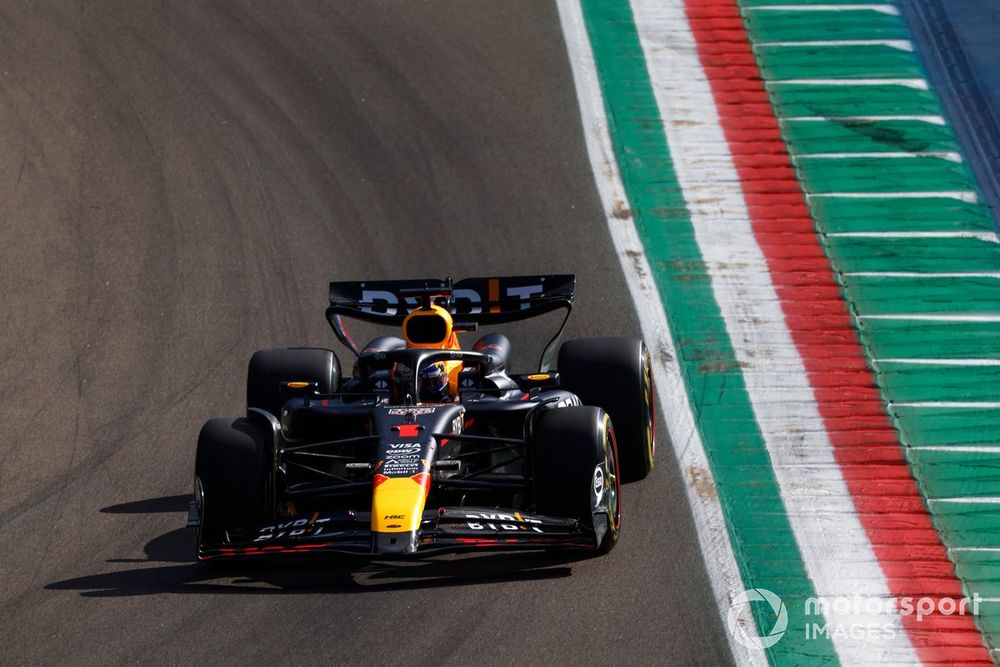After every F1 qualifying session, Autosport publishes each team’s qualifying record in terms of team-mate duels.
This record is based exclusively on qualifying results so that grid penalties don’t alter the statistics.
When a driver can’t put in a representative lap time due to a technical issue or an incident, this will be mentioned in the table.
Red Bull 
| Max Verstappen |
9-0 (7-0 without sprints) |
Sergio PErez |
|---|---|---|
| 1 |
5 (+0.358s in Q3) |
|
| 1 |
3 (+0.335s in Q3) |
|
| 1 |
3 (+0.359s in Q3) |
|
| 1 |
2 (+0.066s in Q3) |
|
| 4 |
6 (+0.347s in Q3 – rain) |
|
| 1 |
2 (+0.322s in Q3) |
|
| 1 |
3 (+0.235s in Q3) |
|
| 1 |
4 (+0.219s in Q3) |
|
| 1 |
11 (+0.530s in Q2) |
Mercedes 
| Lewis Hamilton |
2-7 (1-6 without sprints) |
George Russell |
|---|---|---|
|
9 (+0.225s in Q3) |
3 | |
|
8 (+0.144s in Q3) |
7 | |
|
11 (+0.059s in Q2) |
7 | |
|
7 |
9 (+0.242s in Q3) |
|
|
2 |
11 (+0.058s in Q2) |
|
|
18 (+0.489s in Q1) |
8 |
|
|
12 (+0.028s in Q2) |
11 |
|
|
8 (+0.040s in Q3) |
7 |
|
|
8 (+0.270s in Q3) |
6 |
Ferrari 
| Charles Leclerc |
5-3 (4-2 without sprints) |
Carlos Sainz |
|---|---|---|
| 2 |
4 (+0.100s in Q3) |
|
|
5 (+0.250s in Q3) |
2 |
|
|
8 (+0.104s in Q3) |
4 |
|
|
7 (+0.352s in Q3 – rain) |
5 |
|
|
6 |
7 (+0.008s in Q3) |
|
|
2 |
5 (+0.354s in Q3) |
|
|
2 |
3 (+0.073s in Q3) |
|
|
4 |
5 (+0.263s in Q3) |
| Charles Leclerc | 1-0 | Oliver Bearman |
|---|---|---|
| 2 |
11 (+0.530s in Q2) |
McLaren
| Lando Norris |
6-3 (5-2 without sprints) |
Oscar Piastri |
|---|---|---|
| 7 |
8 (+0.069s in Q3) |
|
|
6 (+0.043s in Q3) |
5 |
|
|
4 |
6 (+0.257s in Q3) |
|
|
3 |
6 (+0.271s in Q3) |
|
|
1 |
8 |
|
|
4 |
5 (+0.108s in Q3) |
|
|
9 (+0.311s in Q3) |
6 | |
|
5 |
6 (+0.081s in Q3) |
|
|
3 (+0.017s in Q3) |
2 |
Aston Martin
| Fernando Alonso |
5-4 (4-3 without sprints) |
Lance Stroll |
|---|---|---|
| 6 |
12 (+0.399s in Q2) |
|
| 4 |
10 (+0.726s in Q3) |
|
|
10 (+0.480s in Q3) |
9 |
|
|
5 |
16 (+0.770s in Q1) |
|
|
3 |
15 (+0.558s in Q2) |
|
|
3 |
11 (+0.186s in Q2) |
|
|
8 (+0.044s in Q3) |
7 |
|
|
15 (+0.205s in Q2) |
11 |
|
|
19 (+0.459s in Q1 – went off) |
13 |
Alpine 
| Pierre Gasly |
2-7 (1-6 without sprints) |
Esteban Ocon |
|---|---|---|
|
20 (+0.155s in Q1) |
19 | |
|
18 (+0.004s in Q1) |
17 | |
|
17 (+0.365s in Q1) |
15 | |
|
17 (+0.308s in Q1) |
15 | |
|
16 |
17 (+0.088s in Q1) |
|
|
15 (+0.240s in Q2) |
13 |
|
|
16 (+0.312s in Q1) |
13 |
|
|
12 |
13 (+0.047s in Q2) |
|
|
15 (+0.475s in Q2) |
12 |
Williams 
| Alexander Albon |
7-1 (6-0 without sprints) |
Logan Sargeant |
|---|---|---|
| 13 |
18 (+0.373s in Q1) |
|
| 12 |
19 (+0.419s in Q1) |
|
| 12 |
DNS |
|
| 14 |
19 (+0.176s in Q1) |
|
| 18 |
20 (+0.111s in Q1) |
|
| 14 |
20 (+0.974s in Q1 – spin) |
|
|
20 (+0.307s in Q1) |
19 |
|
|
14 |
17 (+0.144s in Q1) |
|
|
14 |
– (no lap time – track limits) |
RB 
| Yuki Tsunoda |
6-3 (6-1 without sprints) |
Daniel Ricciardo |
|---|---|---|
| 11 |
14 (+0.149s in Q2) |
|
| 9 |
14 (+0.461s in Q2) |
|
| 8 |
18 (+1.297s in Q1) |
|
| 10 |
11 (+0.055s in Q2) |
|
|
19 (+0.571s in Q1) |
14 | |
|
19 (+0.303s in Q1) |
12 | |
|
15 (no lap time – track limits) |
4 | |
|
10 |
18 (+0.293s in Q1) |
|
|
7 |
9 (+0.209s in Q3) |
Sauber
| Valtteri Bottas |
8-1 (7-0 without sprints) |
Zhou Guanyu |
|---|---|---|
| 16 |
17 (+0.001s in Q1) |
|
| 16 |
– (no lap time – crash in FP3) |
|
| 13 |
20 (+0.848s in Q1) |
|
| 13 |
20 (+0.541s in Q1) |
|
| 9 |
10 (+2.493s in Q3 – rain) |
|
| 10 |
16 (+0.336s in Q1) |
|
|
18 (+0.093s in Q1) |
17 |
|
|
16 |
20 (+0.361s in Q1) |
|
|
16 |
17 (+0.208s in Q1) |
Haas 
| Nico Hulkenberg |
6-3 (5-2 without sprints) |
Kevin Magnussen |
|---|---|---|
| 10 |
15 (+0.678s in Q2) |
|
|
15 (no lap time – technical issue) |
13 |
|
|
16 (+0.267s in Q1) |
14 |
|
|
12 |
18 (+0.310s in Q1) |
|
|
13 (+0.005s in Q2) |
12 |
|
|
9 |
17 (+0.448s in Q1) |
|
|
10 |
14 (+0.284s in Q2) |
|
|
9 |
19 (+0.236s in Q1) |
|
|
10 |
18 (+1.013s in Q1 – impeded) |

